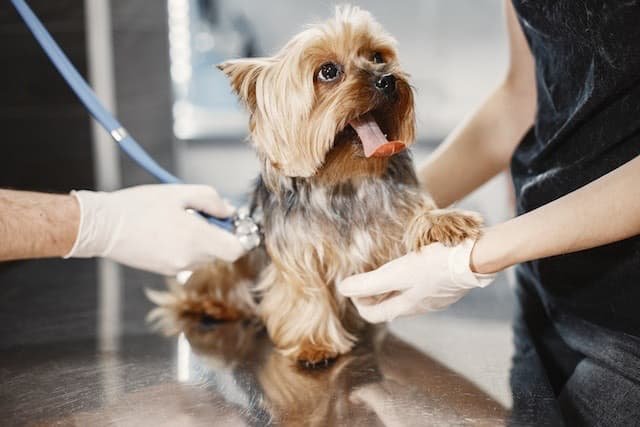TABLE OF CONTENTS
Hypothermia
Hypothermia is a general systemic condition in which there is a decrease in body temperature below a critical level. Hypothermia results when heat loss exceeds heat production.
Etiology of hypothermia
Hypothermia is caused due to excessive heat loss or diminished heat production.
Excessive heat loss is caused by:
- Excessively cold air will cause a loss of heat if increased metabolic activity, muscular tone, and peripheral vasoconstriction fail to compensate
- Infusion of cold solution may also cause hypothermia
- Lying on cold, uninsulated surface or placing animal in cold room or environment
- Induced vasodilation
- Over aggressive treatment of hyperthermia
Diminished heat production is caused by:
- Anaesthetic drug induced depression of hypothalamic thermostatic mechanism
- Decreased muscle tone as in parturient paresis
- Acute ruminal impaction
- Sedation associated with profuse diarrhea in the cold cow syndrome and hypo-pitutarism
- Hypoadrenalism myxedema
A sudden fall in temperature in a previously febrile animal—the so-called premortal fall—is a bad prognostic sign. Hypothermia may be a significant cause of post-shearing mortality in sheep, especially where there has been a fall in body weight in the period immediately preceding shearing.
Pathogenesis of hypothermia
Pathogenesis of hypothermia is explained below:

Clinical Findings
Prolonged severe hypothermia results in the occurrence of various disorders like metabolic acidosis, atrial arrhythmia, ventricular arrhythmia, hypokalemia, hyponatremia, increased blood viscosity, depressed myocardial function, coagulopathies, hyperglycemia, insulin resistance, hepatic glycogen depletion and impaired gluconeogenesis which ultimately leads to hypoglycemia and cold diuresis.
Cold induced ECG changes, viz., prolonged PR interval and widened QRS, increased myocardial automaticity, inadequate oxygen delivery, lactic acidosis, absence of reflexes and pain response and increased blood viscosity leading to microcirculatory sledging. Autonomic and endocrine thermogenesis mechanism are inactivated, absence of spontaneous ventilation, occurrence of ventricular fibrillation and oxygen regulation disorders.
Treatment of hypothermia
Passive re-warming
Passive re-warming is effective in mild to moderate hypothermia when patient is capable of metabolic or shivering thermogenesis. It is generally safe but is slow and exposes the patient to the harmful effects of hypothermia for a long period.
- Drying of the body surface
- Wrapping of patients with blanket, towel, drapes etc
- Insulation from cold table surface
Active surface rewarming
Active surface rewarming is necessary in moderate to severe forms of hypothermia. it is commonly used in hypothermic patients. Disadvantages of this technique are decreased neuronal feed back to thermostatic centres and decrease in thermogenesis response.
- Circulation of warm-water blanket
- Infra red heat lamp
- Surgical lamp
- Warm water bath
- Forced air dryers
- Hot water bottle
- Electric floor heater
Active core re-warming
Active core re-warming is minimize the potential for vascular collapse associated with surface re-warming techniques.
- Infusion of warmed IV fluids
- Warmed humidified inspired air
- Flushing the open body cavity with warm, sterile, isotonic poly-ionic fluids
- Peritoneal dialysis
- Flushing the stomach or rectumwith luke warm isotonic, poly-ionic fluids.
Dexamethasone is also used in hypothermic shock conditions. Dextrose solutions (20–50%) are also used in hypothermic cases if animals don’t have the energy to produce heat.
Prognosis
The prognosis is good in well-managed cases, but animals with a severely decreased body temperature have a poor prognosis.

